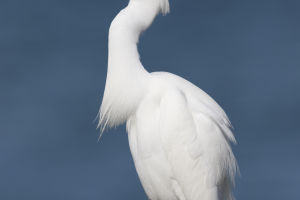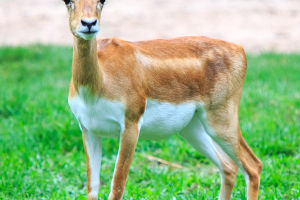The blue jay is a fascinating bird known for its distinctive blue color, social behavior, and intelligence. Blue jays are usually found in forests, parks, and gardens, living in small family groups.
Their blue feathers have a unique sheen in sunlight that is caused by the interference of light inside the feathers rather than pigments. If the blue feathers are crushed, the blue color disappears due to the destruction of the internal structure. This phenomenon is called structural color.
Activity
Blue jays are active birds that display exceptional agility and alertness when foraging for food in leaves and soil. Their flight speed is not fast, with a usual speed of about 32-40 km/h.
Blue jays are prone to predation by hawks and owls when out on the open ground. When flying, their bodies and tails are kept horizontal, and their wings beat slowly.
Sociability
Blue jays are also known for their excellent sociability. They usually live in small family groups and use a variety of calls to communicate with their companions. In addition, some studies have shown that blue jays also have some self-awareness and can recognize their own image in the mirror.
Hiding Behavior and Plant Dispersal
Blue jays love acorns and will bury them in the ground if they are whole and undamaged by insects. A blue jay can deliver 3000-5000 acorns in one fall season. Because they hide their food and sometimes forget to eat it, their behavior helps the plant spread.
Reproductive Behavior
Blue jays usually form small groups during the breeding season, which usually occurs in spring and summer.
They will build nests in trees or tree hollows after mating, usually made of materials such as twigs, dead leaves, and feathers. The female bird lays 3-6 eggs in the nest, and during this time, the parents work together to care for the chicks, including food and protection.
Eating Habits
Blue jays feed primarily on insects, fruit, seeds, spiders, and small invertebrates. They typically jump and climb while foraging in tree canopies.
In addition, blue jays are also omnivorous birds, and they will occasionally eat small mammals, small birds, and frogs. In order to obtain food, blue jays will walk and jump on the grass and sometimes swoop in the air to catch their prey.
Relationship with Humans
Blue jays are considered mascots in many cultures and appear frequently in many literary and artistic works. However, they often suffer a certain degree of ostracism and persecution in cities.
In addition, the habitat of blue jays has also been destroyed by human activities, posing a threat to their survival.
The blue jay is a unique and fascinating bird, known for its distinctive blue color, social behavior, and intelligence.
Although they face challenges from human activities, these birds continue to thrive in forests, parks, and gardens. By understanding their behaviors and habits, we can appreciate the value of these remarkable birds and work to ensure their survival.


